 | TODAY IN SCIENCE HISTORY
NEWSLETTER - 16 JUNE |
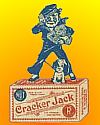 On 16 Jun 1893, Cracker Jack was invented by R.W. Rueckheim, a unique popcorn, peanuts, and molasses confection which he introduced at the World's Columbian Exposition, Chicago's First World Fair. On 16 Jun 1893, Cracker Jack was invented by R.W. Rueckheim, a unique popcorn, peanuts, and molasses confection which he introduced at the World's Columbian Exposition, Chicago's First World Fair.
Today's feature is a little different: it has a recipe for making a cracker jack type candy at home from your own popped corn (1901) and a short description from 1910 of how it was produced at the factory. You can also look at a vintage advertisement for Cracker Jack from 1919.
|
 On 16 Jun 1930, Elmer Sperry died, one of America's most significant electrical engineers. Today's Science Store pick is: Elmer Sperry: Inventor and Engineer, by Thomas Parke Hughes who writes a superb biography of a major American inventor. Sperry obtained more than 350 patents during his lifetime and contributed greatly to the technological changes occurring between 1880 and 1930. He was best known for the Sperry gyrocompass and automatic pilot, and his inventions included arc-light systems, mining machinery, electric automobiles and streetcars, and electrochemical processes. Characteristic of his various inventions were feedback controls which have made automation a fact of life. Sperry was an important contributor in the history of technology, and this book is almost required reading for background of the influences in that field reaching from the 50s to the late 80s. Price $72.00, save 18%, New $30.21. Also available Used from $17.60 (as of time of writing). On 16 Jun 1930, Elmer Sperry died, one of America's most significant electrical engineers. Today's Science Store pick is: Elmer Sperry: Inventor and Engineer, by Thomas Parke Hughes who writes a superb biography of a major American inventor. Sperry obtained more than 350 patents during his lifetime and contributed greatly to the technological changes occurring between 1880 and 1930. He was best known for the Sperry gyrocompass and automatic pilot, and his inventions included arc-light systems, mining machinery, electric automobiles and streetcars, and electrochemical processes. Characteristic of his various inventions were feedback controls which have made automation a fact of life. Sperry was an important contributor in the history of technology, and this book is almost required reading for background of the influences in that field reaching from the 50s to the late 80s. Price $72.00, save 18%, New $30.21. Also available Used from $17.60 (as of time of writing).
Yesterday's pick: The Sciences of the Artificial, by Herbert A. Simon.
For picks from earlier newsletters, see the Today in Science Science Store home page. | |
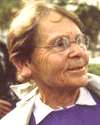 | "I was just so interested in what I was doing I could hardly wait to get up in the morning and get at it. One of my friends, a geneticist, said I was a child, because only children can't wait to get up in the morning to get at what they want to do." - Barbara McClintock, American geneticist (born 16 Jun 1902)  |
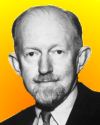 | "A rill in a barnyard and the Grand Canyon represent, in the main, stages of valley erosion that began some millions of years apart." - George Gaylord Simpson, American paleontologist (born 16 Jun 1902)  |
| "With the sword of Science and the armour of Practice German beer will encircle the world." - Max Delbr�ck, German chemist (born 16 Jun 1850)  |
| Before you look at today's web page, see if you can answer some of these questions about the events that happened on this day. Some of the names are very familiar. Others will likely stump you. Tickle your curiosity with these questions, then check your answers on today's web page. |
 |  Barbara McClintock, born 16 Jun 1902, was an American scientist whose work on the cytogenetics of maize led her to theorize that genes are transposable - they can move around - on and between chromosomes. McClintock drew this inference by observing changing patterns of coloration in maize kernels over generations of controlled crosses. For her discovery, she was She was awarded the Nobel Prize in Physiology or Medicine in 1983. Barbara McClintock, born 16 Jun 1902, was an American scientist whose work on the cytogenetics of maize led her to theorize that genes are transposable - they can move around - on and between chromosomes. McClintock drew this inference by observing changing patterns of coloration in maize kernels over generations of controlled crosses. For her discovery, she was She was awarded the Nobel Prize in Physiology or Medicine in 1983.
 What was notable about this woman's award of the Nobel Prize? |
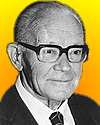 |  Georg Wittig, born 16 Jun 1897, was a German chemist who discovered how a family of organic compounds called ylides could form the basis of the Wittig reaction. Because of the Wittig reaction, complex compounds can now routinely be synthesized, such as vitamin A, vitamin D derivatives, steroids, and biological pesticides. Georg Wittig, born 16 Jun 1897, was a German chemist who discovered how a family of organic compounds called ylides could form the basis of the Wittig reaction. Because of the Wittig reaction, complex compounds can now routinely be synthesized, such as vitamin A, vitamin D derivatives, steroids, and biological pesticides.
 What is the result of a Wittig reaction? |
 |  A German-born American engineer (1912-1977) played a prominent role in all aspects of rocketry and space exploration, first in Germany and, after World War II, in the United States. A German-born American engineer (1912-1977) played a prominent role in all aspects of rocketry and space exploration, first in Germany and, after World War II, in the United States.  Can you name this scientist? Can you name this scientist? |
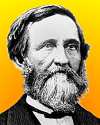 |  Crawford Williamson Long (1815-1878) was an American physician who was the first in the U.S. to use a certain compound as an anesthetic in surgery. On 30 Mar 1842, practicing in rural Georgia, he first used this anesthetic while he removed a tumour from a patient's neck. Crawford Williamson Long (1815-1878) was an American physician who was the first in the U.S. to use a certain compound as an anesthetic in surgery. On 30 Mar 1842, practicing in rural Georgia, he first used this anesthetic while he removed a tumour from a patient's neck.  What compound did he use as an anesthetic? What compound did he use as an anesthetic? |

|  On a certain 16 Jun, after some false starts, with ten investors plus Ford's patents, knowledge and engine, Henry Ford incorporated the Ford Motor Company. On a certain 16 Jun, after some false starts, with ten investors plus Ford's patents, knowledge and engine, Henry Ford incorporated the Ford Motor Company.
 In what decade was the Ford Motor Company incorporated? |
|  On 16 Jun 1903, pharmacist Caleb D. Bradham's soft drink trademark was registered with the U.S. Patent Office. Pharmacies at the time were favorite gathering places. He had created this soft drink in the summer of 1898, to increase business at his store's soda fountain. He mixed carbonated water, sugar, vanilla, oils, pepsin, and kola nut extract. Customers at in his pharmacy in New Bern, N.C., liked the beverage and called it Brad’s Drink. On 16 Jun 1903, pharmacist Caleb D. Bradham's soft drink trademark was registered with the U.S. Patent Office. Pharmacies at the time were favorite gathering places. He had created this soft drink in the summer of 1898, to increase business at his store's soda fountain. He mixed carbonated water, sugar, vanilla, oils, pepsin, and kola nut extract. Customers at in his pharmacy in New Bern, N.C., liked the beverage and called it Brad’s Drink.
 What is the trademark by which the drink is now known? |
When you have your answers ready to all the questions above, you'll find all the information to check them, and more, on the June 16 web page of Today in Science History. Or, try this link first for just the brief answers.
Fast answers for the previous newsletter for June 15: Atlantic Ocean; skyscraper; Joseph Dixon; Charles Goodyear; the decade including the year 1752; celluloid.
|
 If you enjoy this newsletter, the website, or wish to offer encouragement or ideas, please send feedback by using your mail reader Reply button. If you enjoy this newsletter, the website, or wish to offer encouragement or ideas, please send feedback by using your mail reader Reply button. |
--
If you do not want to receive any more newsletters,
Unsubscribe To update your preferences and to unsubscribe visit
this link 


 On 16 Jun 1893, Cracker Jack was invented by R.W. Rueckheim, a unique popcorn, peanuts, and molasses confection which he introduced at the World's Columbian Exposition, Chicago's First World Fair.
On 16 Jun 1893, Cracker Jack was invented by R.W. Rueckheim, a unique popcorn, peanuts, and molasses confection which he introduced at the World's Columbian Exposition, Chicago's First World Fair.


 Barbara McClintock, born 16 Jun 1902, was an American scientist whose work on the cytogenetics of maize led her to theorize that genes are transposable - they can move around - on and between chromosomes. McClintock drew this inference by observing changing patterns of coloration in maize kernels over generations of controlled crosses. For her discovery, she was She was awarded the Nobel Prize in Physiology or Medicine in 1983.
Barbara McClintock, born 16 Jun 1902, was an American scientist whose work on the cytogenetics of maize led her to theorize that genes are transposable - they can move around - on and between chromosomes. McClintock drew this inference by observing changing patterns of coloration in maize kernels over generations of controlled crosses. For her discovery, she was She was awarded the Nobel Prize in Physiology or Medicine in 1983.  What was notable about this woman's award of the Nobel Prize?
What was notable about this woman's award of the Nobel Prize?
 Georg Wittig, born 16 Jun 1897, was a German chemist who discovered how a family of organic compounds called ylides could form the basis of the Wittig reaction. Because of the Wittig reaction, complex compounds can now routinely be synthesized, such as vitamin A, vitamin D derivatives, steroids, and biological pesticides.
Georg Wittig, born 16 Jun 1897, was a German chemist who discovered how a family of organic compounds called ylides could form the basis of the Wittig reaction. Because of the Wittig reaction, complex compounds can now routinely be synthesized, such as vitamin A, vitamin D derivatives, steroids, and biological pesticides. What is the result of a Wittig reaction?
What is the result of a Wittig reaction?
 A German-born American engineer (1912-1977) played a prominent role in all aspects of rocketry and space exploration, first in Germany and, after World War II, in the United States.
A German-born American engineer (1912-1977) played a prominent role in all aspects of rocketry and space exploration, first in Germany and, after World War II, in the United States.  Can you name this scientist?
Can you name this scientist? 
 Crawford Williamson Long (1815-1878) was an American physician who was the first in the U.S. to use a certain compound as an anesthetic in surgery. On 30 Mar 1842, practicing in rural Georgia, he first used this anesthetic while he removed a tumour from a patient's neck.
Crawford Williamson Long (1815-1878) was an American physician who was the first in the U.S. to use a certain compound as an anesthetic in surgery. On 30 Mar 1842, practicing in rural Georgia, he first used this anesthetic while he removed a tumour from a patient's neck.  What compound did he use as an anesthetic?
What compound did he use as an anesthetic? 
 On a certain 16 Jun, after some false starts, with ten investors plus Ford's patents, knowledge and engine, Henry Ford incorporated the Ford Motor Company.
On a certain 16 Jun, after some false starts, with ten investors plus Ford's patents, knowledge and engine, Henry Ford incorporated the Ford Motor Company. In what decade was the Ford Motor Company incorporated?
In what decade was the Ford Motor Company incorporated? On 16 Jun 1903, pharmacist Caleb D. Bradham's soft drink trademark was registered with the U.S. Patent Office. Pharmacies at the time were favorite gathering places. He had created this soft drink in the summer of 1898, to increase business at his store's soda fountain. He mixed carbonated water, sugar, vanilla, oils, pepsin, and kola nut extract. Customers at in his pharmacy in New Bern, N.C., liked the beverage and called it Brad’s Drink.
On 16 Jun 1903, pharmacist Caleb D. Bradham's soft drink trademark was registered with the U.S. Patent Office. Pharmacies at the time were favorite gathering places. He had created this soft drink in the summer of 1898, to increase business at his store's soda fountain. He mixed carbonated water, sugar, vanilla, oils, pepsin, and kola nut extract. Customers at in his pharmacy in New Bern, N.C., liked the beverage and called it Brad’s Drink. What is the trademark by which the drink is now known?
What is the trademark by which the drink is now known? If you enjoy this newsletter, the website, or wish to offer encouragement or ideas, please send feedback by using your mail reader Reply button.
If you enjoy this newsletter, the website, or wish to offer encouragement or ideas, please send feedback by using your mail reader Reply button. 

Δεν υπάρχουν σχόλια:
Δημοσίευση σχολίου